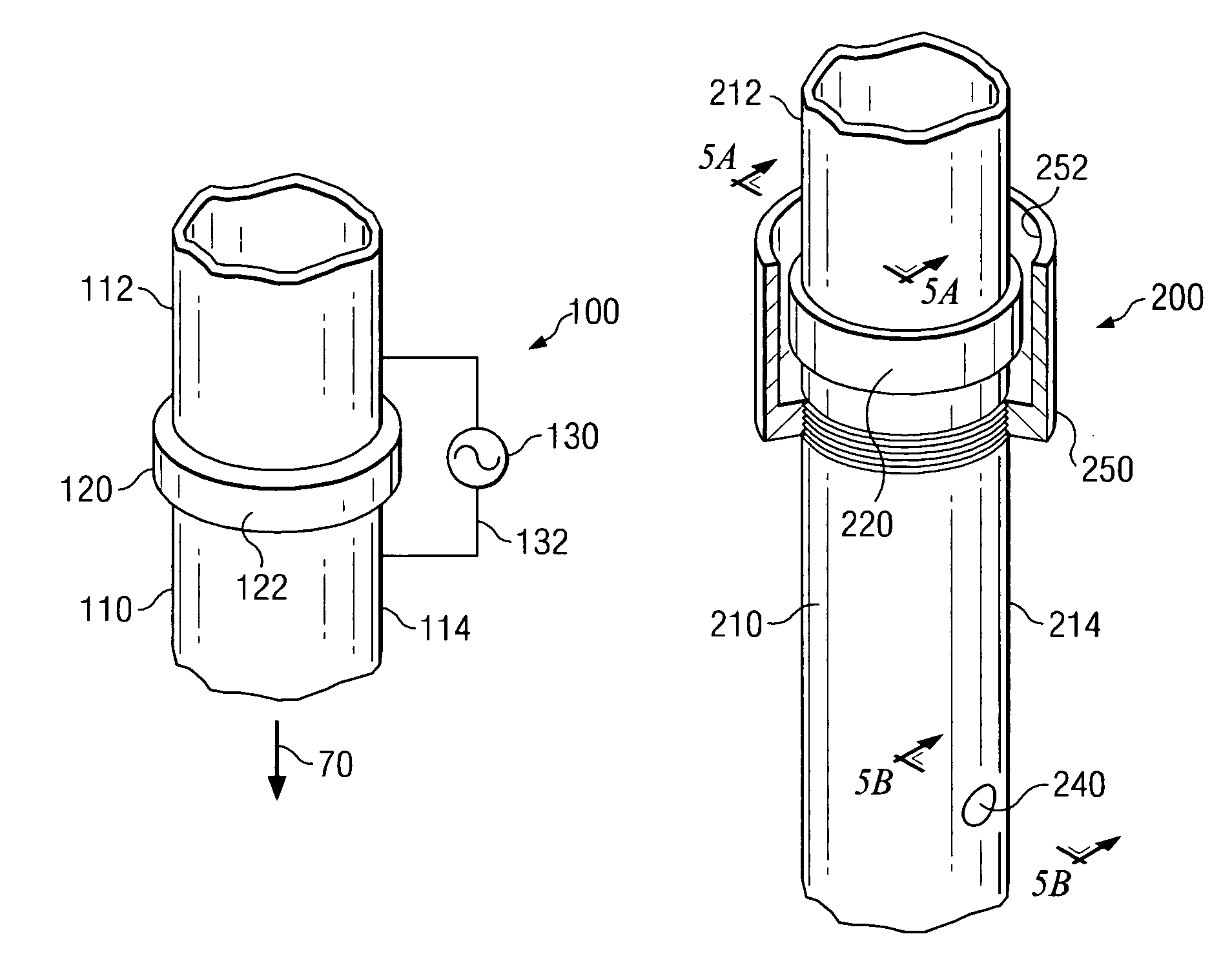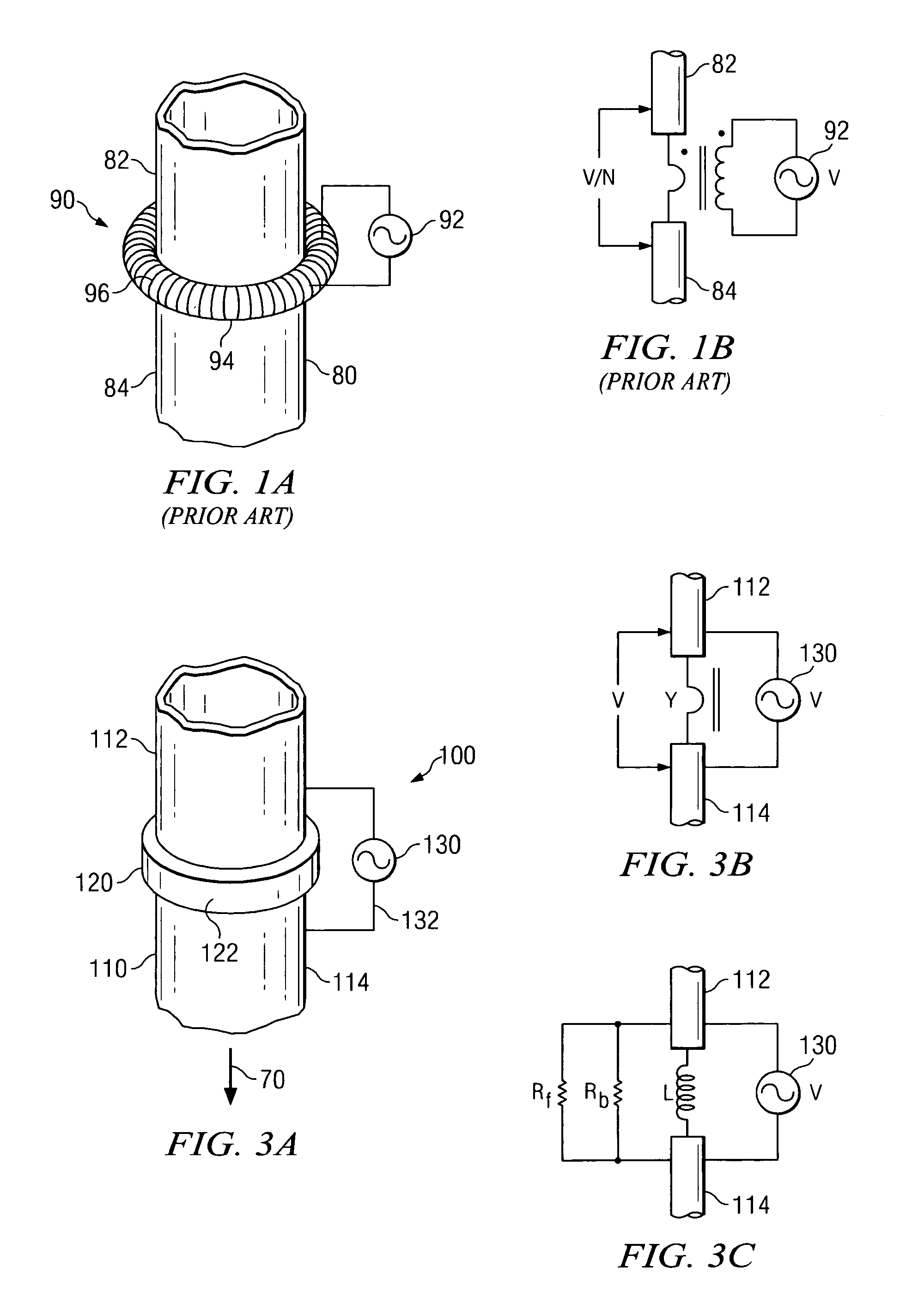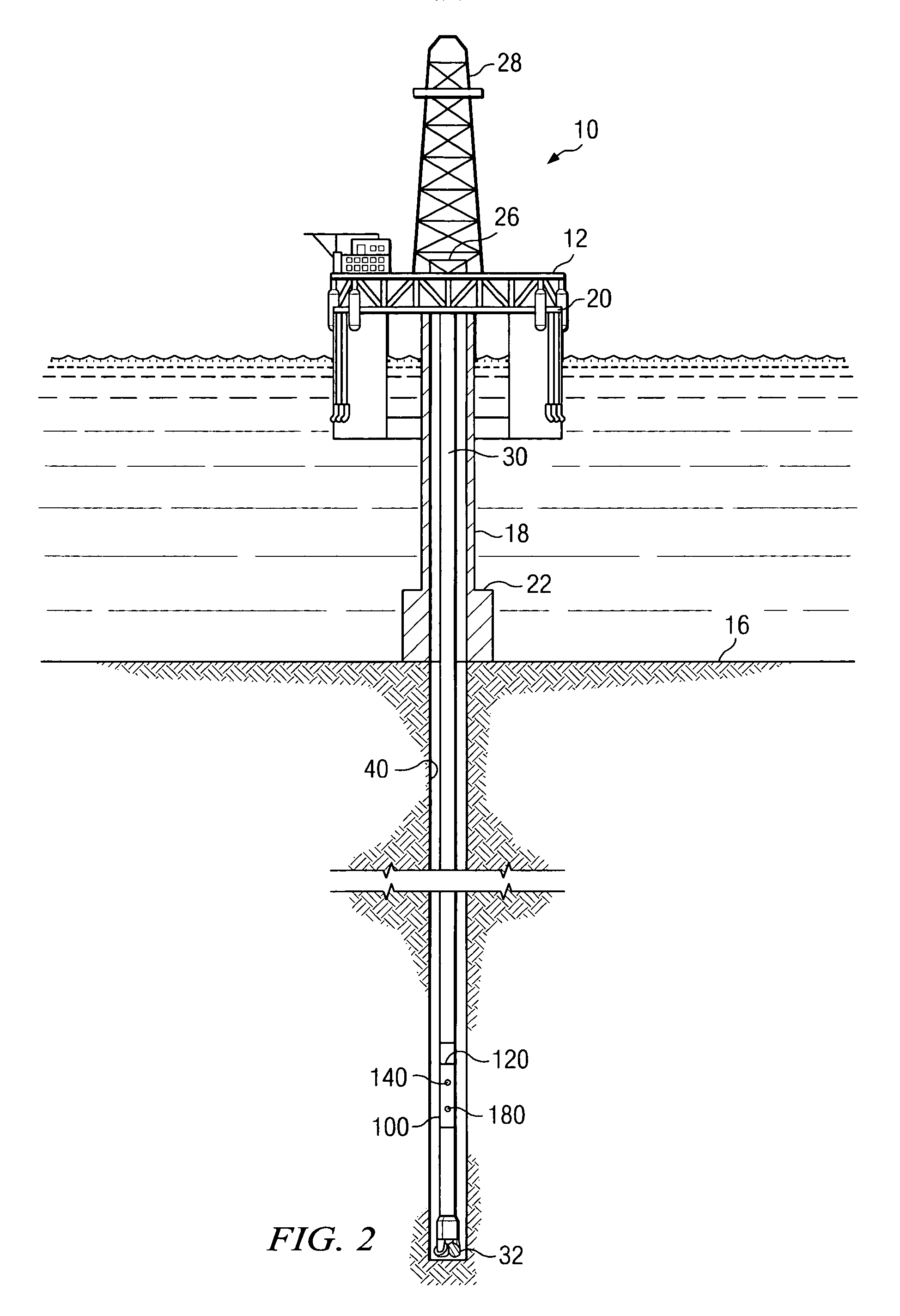Well logging apparatus for obtaining azimuthally sensitive formation resistivity measurements
a technology of formation resistivity and logging apparatus, which is applied in the direction of instruments, detection using electromagnetic waves, and wellbore/well accessories, etc., can solve the problems of winding, large toroidal core construction, and often problematic use of multiple-turn toroidal transformers, so as to reduce the admittance of the tool body and increase the resistance to alternating current flow
- Summary
- Abstract
- Description
- Claims
- Application Information
AI Technical Summary
Benefits of technology
Problems solved by technology
Method used
Image
Examples
Embodiment Construction
[0025]FIG. 1A schematically illustrates a wound toroidal core antenna 90 deployed about a drill collar 80 as utilized in various prior art downhole resistivity measurement tools. In a typical prior art apparatus, the wound toroidal core antenna 90 includes a toroidal core 94 having multiple windings (N-turns) of insulated wire 96 wrapped thereabout. An AC voltage supply 92 is coupled to the ends of the insulated wire 96. AC current passing through the windings induces a magnetic field in the toroidal core 94 circumferentially about the drill collar 80. The circumferential magnetic field further induces an AC potential difference in the drill collar 80 such that there is a potential difference between upper 82 and lower 84 sides thereof. It will be appreciated that terms used in this disclosure such as “upper” and “lower” are intended merely to show relative positional relationships in the described exemplary embodiments and are not limiting of the invention in any way. As described ...
PUM
 Login to View More
Login to View More Abstract
Description
Claims
Application Information
 Login to View More
Login to View More - R&D
- Intellectual Property
- Life Sciences
- Materials
- Tech Scout
- Unparalleled Data Quality
- Higher Quality Content
- 60% Fewer Hallucinations
Browse by: Latest US Patents, China's latest patents, Technical Efficacy Thesaurus, Application Domain, Technology Topic, Popular Technical Reports.
© 2025 PatSnap. All rights reserved.Legal|Privacy policy|Modern Slavery Act Transparency Statement|Sitemap|About US| Contact US: help@patsnap.com



